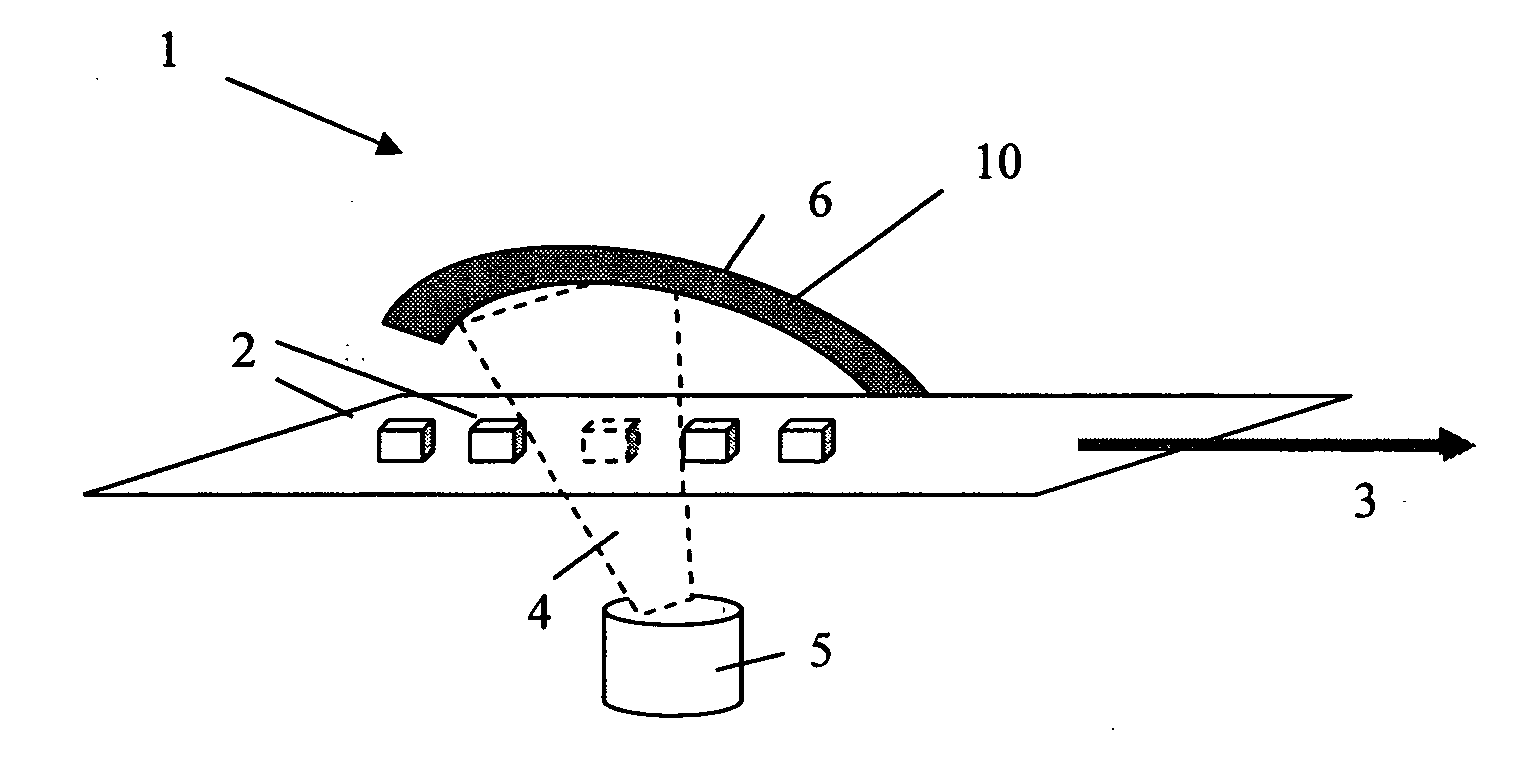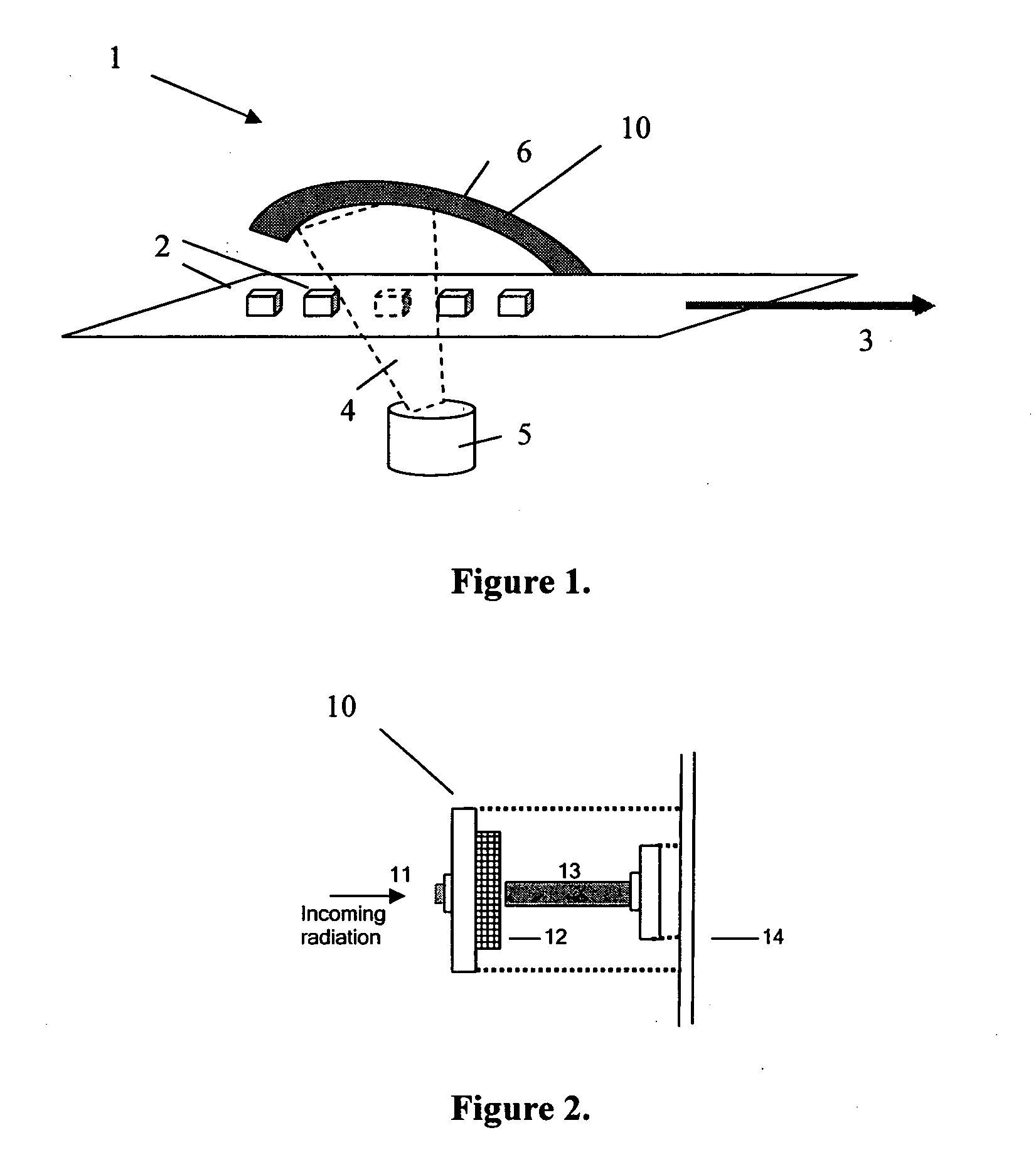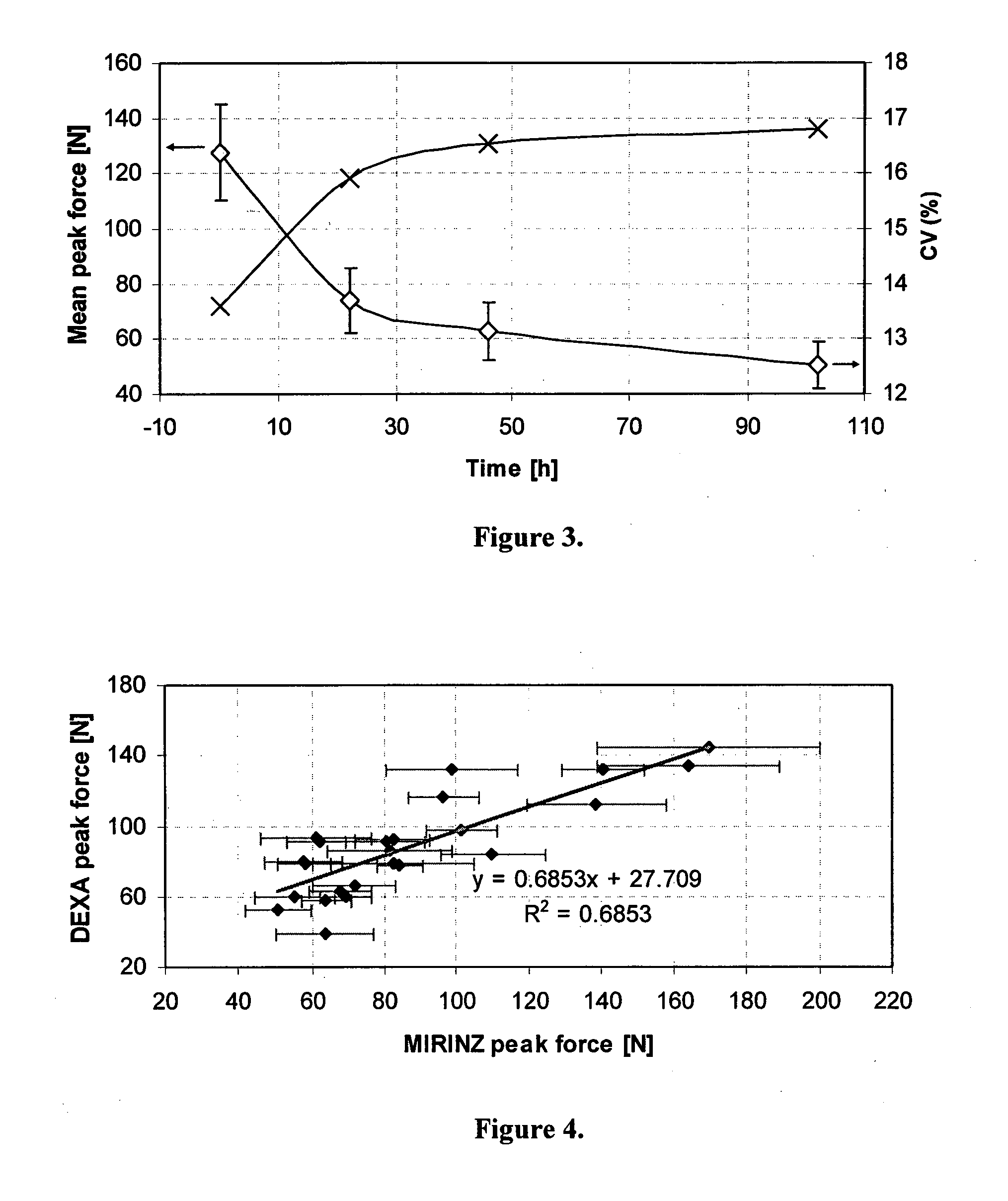Evaluation of Meat Tenderness
a meat tenderness and evaluative technology, applied in the field of evaluative of meat tenderness, can solve the problems of not providing a good indication of tenderness, earlier techniques may fail to investigate the variation of tenderness, and non-invasive efforts to determine tenderness prior to consumption have met with limited success
- Summary
- Abstract
- Description
- Claims
- Application Information
AI Technical Summary
Benefits of technology
Problems solved by technology
Method used
Image
Examples
examples
Tenderization During Meat Aging
[0082]This example focused on the myofibrillar contributions on tenderness by controlling the ambient conditions during aging (Hopkins and Thompson, 2002). The shear force testing was performed using a MIRINZ shear force device. The MIRINZ device is similar to the better known Warner-Bratzler instrument but uses a different scale. Both scales are linearly related to each other (Graafhuis, A. E., Honikel, K. O., Devine, C. E. and Chrystall, B. B. 1991. Meat tenderness of different muscles cooked to different temperatures and assessed by different methods. Proc. 37th Int. Congress of Meat Science and Technology, Kulmbach, 365-368), where the shear force values measured with the Warner Bratzler shear device are approximately 0.65% of MIRINZ device values.
[0083]Eight beef striploins (beef longissimus muscle) were removed post rigor from electrically stimulated carcasses approximately 12 hours after slaughter and were then cut into two longitudinal pieces. ...
PUM
 Login to View More
Login to View More Abstract
Description
Claims
Application Information
 Login to View More
Login to View More - R&D
- Intellectual Property
- Life Sciences
- Materials
- Tech Scout
- Unparalleled Data Quality
- Higher Quality Content
- 60% Fewer Hallucinations
Browse by: Latest US Patents, China's latest patents, Technical Efficacy Thesaurus, Application Domain, Technology Topic, Popular Technical Reports.
© 2025 PatSnap. All rights reserved.Legal|Privacy policy|Modern Slavery Act Transparency Statement|Sitemap|About US| Contact US: help@patsnap.com



